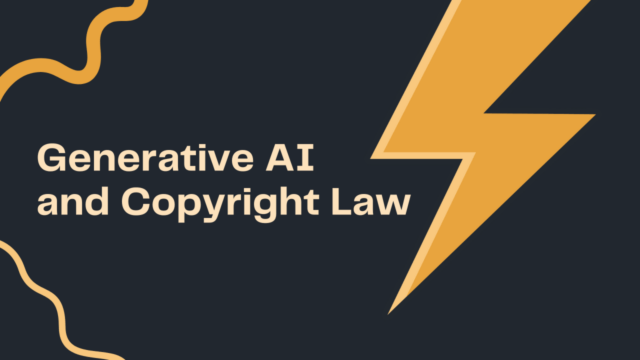
In the rapidly evolving digital landscape, the intersection of generative artificial intelligence (AI) and copyright law in the United States represents a critical frontier of legal and technological debate. This complex relationship challenges existing legal frameworks, pushing the boundaries of creativity, authorship, and intellectual property rights.
At the core of this legal conundrum is the question of whether AI-generated works—texts, images, music, and more—qualify for copyright protection. Traditional copyright law mandates human authorship as a prerequisite for protection, leaving AI-generated content in a precarious position. This has sparked discussions on the need for legal reforms that can keep pace with technological advancements without stifolding innovation or infringing on creators’ rights.
The U.S. Copyright Office has taken proactive steps to address these challenges. In early 2023, it launched an initiative to scrutinize the implications of AI on copyright policy, particularly focusing on the authorship and use of copyrighted materials in AI training. The initiative has sparked widespread engagement, evidenced by the over 10,000 comments received in response to a notice of inquiry published in August 2023. These comments are part of an ongoing effort to shape a comprehensive report on the issue, with sections to be published as they are finalized throughout 2024.
One pivotal legal precedent in copyright law’s adaptability to new forms of creativity can be found in the Supreme Court case of Campbell v. Acuff-Rose Music. This case underscored the concept of “transformative fair use,” suggesting that if an AI’s output significantly transforms original copyrighted material, it might be considered a new, copyrightable work. This notion could potentially apply to generative AI, where the output is not a mere replication but a novel creation that adds new expression, meaning, or message.
Moreover, the intricacies of the “right of publicity” have gained new significance in the age of generative AI. Currently recognized in about half of the states, this right requires individual consent for commercial use of personal identity aspects. The emergence of generative AI underscores the calls for a federal right of publicity to ensure a balance between creators’ rights and the innovative capabilities of AI.
Internationally, there’s a patchwork of approaches to AI and copyright. The European Union, for instance, is considering transparency requirements for the use of copyrighted training data by generative AI systems. Such varied international stances highlight the global nature of the challenge and the need for coherent policies that recognize the intricacies of AI-generated content.
As we navigate this legal labyrinth, several factors remain clear: the need for clear guidelines on AI and copyright, the importance of balancing innovation with rights protection, and the inevitable evolution of copyright law in response to technological advancements. The ongoing discussions and forthcoming reports from the U.S. Copyright Office are anticipated to shed light on these complex issues, potentially setting the stage for legislative reforms tailored to the digital age.
The dialogue between generative AI and U.S. copyright law is a fascinating exploration of technology’s impact on creativity and intellectual property. As we move forward, the balance between protecting creators and fostering innovation will be crucial in shaping the future of digital content creation.








